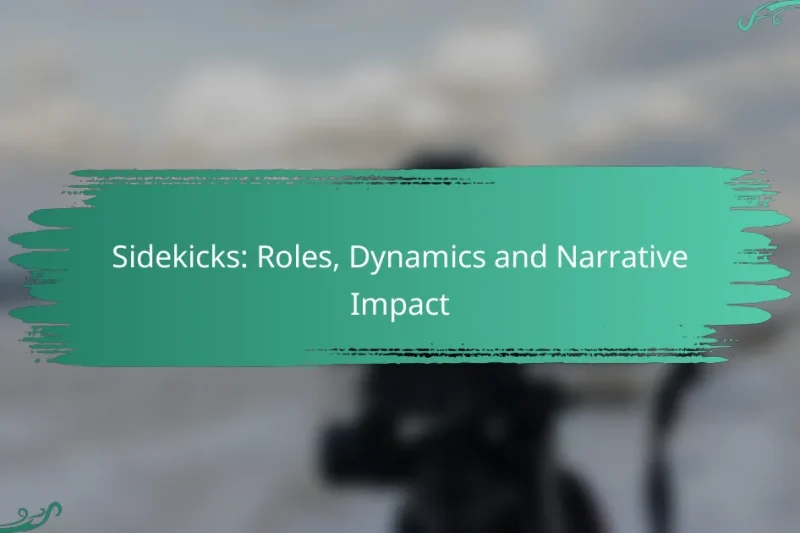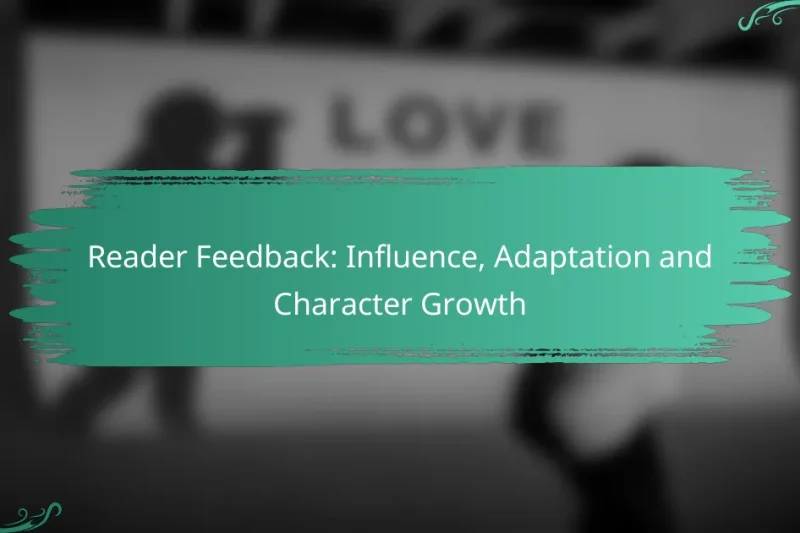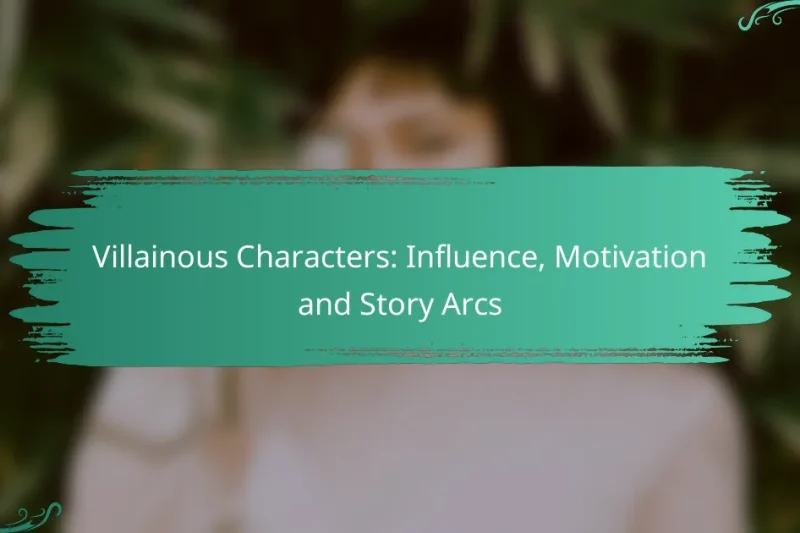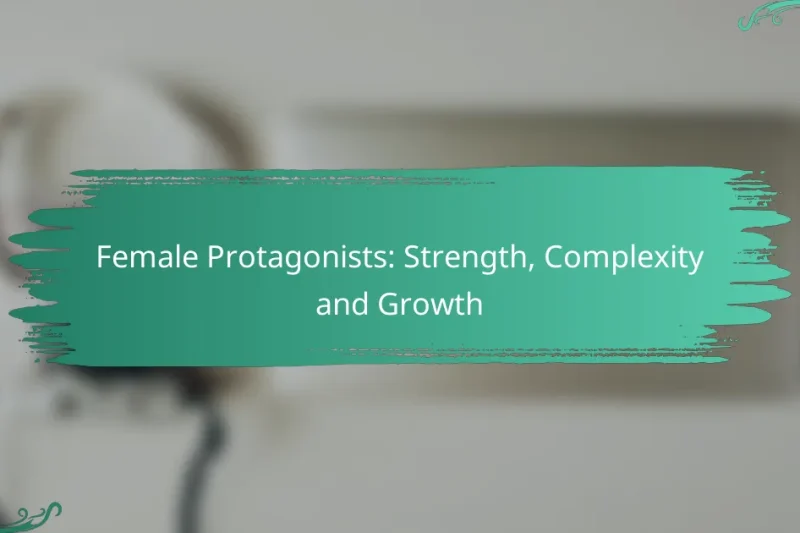Sidekicks play a crucial role in storytelling by supporting the main character and enriching the narrative … Sidekicks: Roles, Dynamics and Narrative ImpactRead more
Hench Girl Comics: Character Development Insights
Hench Girl Comics offer a unique approach to character development by emphasizing the growth and complexity of side characters rather than traditional heroes. Through dynamic arcs, rich backstories, and evolving relationships, these comics create relatable figures that resonate with readers. By exploring themes of loyalty, ambition, and personal growth, they provide fresh insights into the lives of those often overlooked in superhero narratives.
Character Archetypes: Hench Girl vs Mainstream Comics
In the realm of comics, hench girls serve as essential sidekicks to villains, often characterized by … Character Archetypes: Hench Girl vs Mainstream ComicsRead more
Character Evolution: Progression, Themes and Transformations
Character evolution plays a crucial role in storytelling, allowing characters to grow and adapt in response … Character Evolution: Progression, Themes and TransformationsRead more
Reader Feedback: Influence, Adaptation and Character Growth
Reader feedback plays a crucial role in shaping character growth, offering valuable insights into audience perceptions … Reader Feedback: Influence, Adaptation and Character GrowthRead more
Villainous Characters: Influence, Motivation and Story Arcs
Villainous characters are integral to storytelling, as they create conflict and enrich the emotional depth of … Villainous Characters: Influence, Motivation and Story ArcsRead more
Female Protagonists: Strength, Complexity and Growth
Female protagonists serve as powerful representations of strength, complexity, and growth in literature and media. They … Female Protagonists: Strength, Complexity and GrowthRead more
Cultural Influences: Design, Representation and Themes
Cultural influences play a pivotal role in shaping design, representation, and thematic expression across various domains. … Cultural Influences: Design, Representation and ThemesRead more
How do Hench Girl Comics develop character arcs?
Hench Girl Comics develop character arcs through a blend of dynamic growth, backstory integration, evolving relationships, conflict resolution, and visual storytelling techniques. These elements work together to create relatable and engaging characters that resonate with readers.
Dynamic character growth
Dynamic character growth in Hench Girl Comics often involves characters facing challenges that push them to evolve. This growth can manifest through personal struggles, moral dilemmas, or external conflicts that force characters to adapt. For example, a hench girl might start as a loyal sidekick but gradually question her role and seek independence.
Writers should ensure that character growth feels authentic and is paced appropriately. Sudden changes can alienate readers, so gradual development is key. Consider using pivotal moments that act as catalysts for change, allowing characters to reflect on their experiences.
Backstory integration
Integrating backstory is crucial for understanding a character’s motivations and decisions. Hench Girl Comics often reveal a character’s past through flashbacks or dialogue, providing context for their current actions. For instance, a hench girl may have a troubled childhood that influences her choices in the present.
Effective backstory should be relevant and enhance the main narrative without overwhelming it. Writers can use snippets of backstory to gradually unveil a character’s history, ensuring readers remain engaged and curious about their journey.
Relationship evolution
Relationship evolution is a vital aspect of character development in Hench Girl Comics. Characters often form complex relationships with allies, villains, and mentors that shape their growth. For example, a hench girl might develop a bond with a hero, leading her to question her loyalty to her villainous boss.
Writers should focus on how these relationships change over time, influenced by events and character decisions. Highlighting moments of tension, support, or betrayal can create depth and keep readers invested in the characters’ journeys.
Conflict resolution
Conflict resolution is essential for character arcs, providing opportunities for growth and change. In Hench Girl Comics, conflicts can arise from internal struggles, interpersonal disputes, or external threats. A hench girl might face a moral conflict when her actions harm someone she cares about, prompting her to reconsider her choices.
Effective resolution should feel satisfying and contribute to character development. Writers can explore different outcomes, whether through reconciliation, sacrifice, or transformation, allowing characters to emerge stronger or more self-aware.
Visual storytelling techniques
Visual storytelling techniques play a significant role in character development within Hench Girl Comics. Illustrations can convey emotions, actions, and changes in a character’s demeanor that words alone may not capture. For instance, a character’s posture or facial expressions can indicate their internal struggles or growth.
Writers and artists should collaborate closely to ensure that visual elements enhance the narrative. Using color schemes, panel layouts, and visual metaphors can effectively highlight character arcs and engage readers on a deeper level.
What are the key traits of Hench Girl characters?
Hench Girl characters are often defined by their strength, resilience, complex motivations, and unique abilities. These traits not only shape their roles within the narrative but also contribute to their development and interactions with other characters.
Strength and resilience
Strength and resilience are fundamental traits of Hench Girl characters, allowing them to endure challenges and setbacks. This physical and emotional toughness often manifests in their ability to recover from defeats or betrayals, making them formidable allies or adversaries.
For instance, a Hench Girl might face a powerful hero and, despite being defeated, return stronger and more determined. This resilience can also reflect personal growth, as they learn from their experiences and adapt their strategies.
Complex motivations
Complex motivations drive Hench Girl characters, often blurring the lines between good and evil. Their reasons for following a villain or engaging in criminal activities can stem from personal struggles, loyalty, or a quest for power.
These motivations add depth to their character, making them relatable and intriguing. For example, a Hench Girl might be motivated by a desire to protect a loved one, leading to moral dilemmas that challenge her loyalty and ethics.
Unique abilities
Unique abilities set Hench Girl characters apart, often enhancing their effectiveness in their roles. These skills can range from combat proficiency to specialized knowledge in technology or magic, making them valuable assets in any conflict.
For example, a Hench Girl with exceptional hacking skills can infiltrate secure systems, providing critical information to her team. Such abilities not only contribute to the plot but also allow for creative problem-solving in various scenarios.
How do Hench Girl Comics compare to traditional superhero comics?
Hench Girl Comics often present a fresh perspective compared to traditional superhero comics, focusing on the lives and challenges of side characters rather than the main heroes. This shift allows for deeper exploration of themes like loyalty, ambition, and personal growth.
Character depth
In Hench Girl Comics, character development is often more nuanced, showcasing the complexities of supporting characters who may feel overshadowed by traditional heroes. These characters typically grapple with their own motivations, insecurities, and moral dilemmas, allowing readers to connect with them on a personal level.
For example, a hench girl might struggle with her loyalty to a villain while questioning the ethics of her actions. This internal conflict adds layers to her character, making her more relatable than the often one-dimensional portrayals of traditional superheroes.
Storytelling style
The storytelling style in Hench Girl Comics tends to be more character-driven, focusing on personal narratives rather than epic battles. This approach allows for humor, irony, and social commentary, which can resonate with readers looking for something beyond typical superhero tropes.
Unlike traditional superhero comics that often follow a linear plot centered around saving the world, Hench Girl Comics may explore everyday challenges, such as job insecurity or friendship dynamics, making the stories feel more grounded and accessible.
Target audience differences
Hench Girl Comics often appeal to a different demographic than traditional superhero comics, attracting readers who appreciate character-driven stories and humor. This audience may include younger readers or those seeking diverse perspectives in the comic book world.
While traditional superhero comics often target long-time fans with established lore, Hench Girl Comics can attract new readers by offering relatable themes and modern storytelling techniques. This shift in focus can help broaden the comic book audience significantly.
What influences character design in Hench Girl Comics?
Character design in Hench Girl Comics is influenced by a variety of factors, including artistic style, cultural references, and market trends. These elements shape how characters are perceived and can significantly impact their development and relatability.
Artistic style choices
The artistic style in Hench Girl Comics plays a crucial role in character design, as it sets the tone and mood of the narrative. Styles can range from exaggerated cartoonish forms to more realistic portrayals, affecting how audiences connect with the characters. For instance, a more whimsical style may lend itself to humor, while a darker aesthetic might emphasize conflict and drama.
When selecting an artistic style, creators should consider their target audience. Younger readers might respond better to vibrant colors and playful designs, while older audiences may prefer a more subdued palette and intricate details. Balancing these choices can enhance character appeal and engagement.
Cultural references
Cultural references significantly shape character design by embedding familiar elements that resonate with readers. These references can include fashion trends, social issues, or iconic symbols that reflect contemporary society. For example, a character dressed in streetwear may connect with urban youth, while another in vintage attire might evoke nostalgia.
Incorporating cultural elements requires sensitivity and awareness of diverse backgrounds. Creators should aim for authenticity, ensuring that references are relevant and respectful. This can deepen character relatability and foster a stronger connection with the audience.
Market trends
Market trends influence character design by dictating what styles and themes are currently popular among comic readers. Trends can shift rapidly, often driven by successful franchises or emerging social movements. For instance, the rise of superhero narratives has led to a surge in characters with unique powers and backstories.
To stay relevant, creators should monitor industry trends and audience preferences. Engaging with fan feedback and analyzing successful comics can provide insights into what resonates with readers. However, it is essential to balance trend-following with originality to maintain a unique voice in the crowded market.
What are the emerging trends in Hench Girl Comics?
Emerging trends in Hench Girl Comics include a focus on character depth, diverse representation, and innovative storytelling techniques. These comics are increasingly exploring the complexities of villainous sidekicks, showcasing their motivations and personal growth.
Character Complexity
Hench Girl Comics are moving beyond one-dimensional portrayals of sidekicks. Characters are being developed with intricate backstories, personal dilemmas, and moral conflicts, making them relatable and engaging. For instance, a hench girl might struggle with loyalty to her villainous boss while yearning for independence.
Diverse Representation
There is a noticeable push for inclusivity in Hench Girl Comics, with creators aiming to represent a broader spectrum of identities and backgrounds. This trend not only enriches the narrative but also resonates with a wider audience. Readers can expect to see characters of various ethnicities, body types, and sexual orientations, reflecting real-world diversity.
Innovative Storytelling Techniques
Writers and artists are experimenting with narrative structures and visual styles in Hench Girl Comics. This includes non-linear storytelling, interactive elements, and unique art styles that enhance the reading experience. For example, some comics may incorporate multimedia elements or alternate perspectives to deepen the plot and character development.






